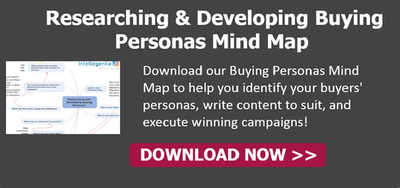
Unlike B2B buyers, B2C buyers are deemed to be impulsive. There is nothing impulsive about the way my sister buys clothes, so maybe there are some lessons we can learn from consumers (we are all consumers anyway) that works for B2B marketing and lead nurturing.
So here’s the set-up. In one hour you get three different customers come into your shop. The first customer browses. They pick a few things up but put them back down. Without speaking to you they leave empty handed. A few minutes later a second customer comes in. They start browsing but they stay for a little longer. Eventually they come over to you at the till and ask about a specific item. You’re sorry, you say, you did have some in stock but you don’t right now. Oh well, they shrug, maybe next time. With that, they leave. The third customer comes in. They also have a nose around. They pick up an item, take it straight to the till and buy it from you.
Each encounter is valuable, each customer has entered the shop and each of them is at a different stage of their buying process.
B2B LEAD NURTURING - UNDERSTANDING NEEDS AND WANTS
Lead nurturing to be effective is about understanding the needs and wants of your customers. It’s focused on staying in touch with them so they understand and trust your opinion. They can see what products you have and maybe seen who else uses or has your products so when they are ready to buy they know exactly who to come to.
Take customer number one. What was he or she looking for? You didn’t ask. They might not have been sure, but if you’d started a conversation the two of you might have been able to work it out and then you could have suggested something. Even if you don’t have something that is ideal in the shop right now you could have taken his contact details and then sent him some suggestions of other ideas.
Customer number two is the same. They were interested. Clearly they wanted to talk and they came up to you. They even said “maybe next time” which is your cue to say hey, give your email and let’s stay in touch!
Customer number one bought something but that doesn’t mean you’re relationship has to end. They might want to recommend the same thing to a friend. It might be a suggestion they’re interested in similar products.
You have to start the conversation to find out what it is they need.
KEEP IN TOUCH, YOU HEAR?
So how do you stay in touch? It’s never been easier to keep a relationship going with someone whether they’re your friend, parent, sibling, boyfriend, client or customer. You’ve got email, you’ve got text messages, you’ve got social networks, blogs, or you can go old school and pick up the phone.
The way you stay in touch is largely driven by your customer. They might be happy receiving an email about your latest news and products. They might want you to send them details by post or just give them a call from time to time.
It’s what you send that’s important. If lead nurturing is about trust then the content has to be built around the needs and wants of your customer. Building up a picture of them, creating a buying persona, that includes what they have bought previously, what they are interested in as well as what they already have helps you to shape your content around them. It allows you to personalise your product exactly for their requirements. Would you trust someone who spends all their time talking about themselves and makes no effort to understand where you’re coming from? Of course not.
TRUST
Yes, you’re selling products but every interaction isn’t about making a sale. Happy customers are ones who feel they have a relationship with the brands and businesses they deal with day to day, month to month and year to year. The ones they trust. Make the effort to understand what they want and what they’re looking for and you’ll be better placed to provide them with it, and perhaps sell in a few things they might not have thought of along the way. Remember, you’re the expert in what you do.
To be successful at lead nurturing you have to understand exactly what stage of the process your potential customer is at and then engage with them accordingly. Mapping out your buyer personas beforehand will make this a lot easier! Click below to see how Intellegentia can help you to identify your buyers' personas, write content to suit, and execute winning campaigns.
.png?width=250&height=76&name=Intellegentia%20Logo%20(MAIN).png)
